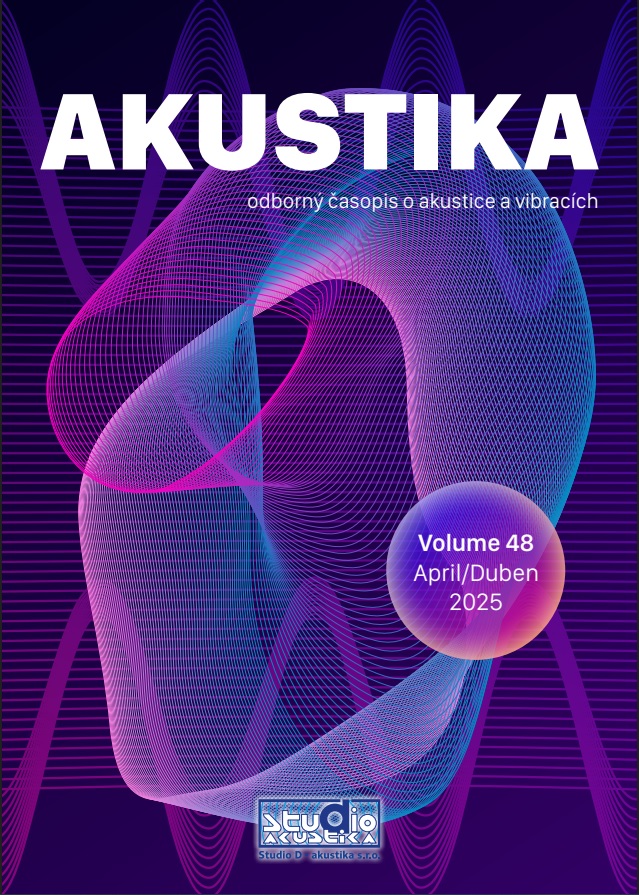SOUND FREQUENCY SPECTRUM VERSUS LENGTH OF CLOSED ORGAN PIPES
DOI:
https://doi.org/10.36336/akustika20254821Klíčová slova:
Organ pipes, wood, sound, tuning, restorationAbstrakt
In the history of the pipe organ, we can observe different pitch standards, which are connected to the musical aesthetics of the time or the intentions of the builder. These differences are often noted based on provenance, meaning the origin or location where the organ was made. Each historical period had its own aesthetic and technical requirements, which were reflected in the tuning and pitch of the organ. The retuning of organs occurred mainly at the turn of the 19th and 20th centuries, with a change in the intonation of these instruments. In the territory of Slovakia, this change primarily involved a shift from the original pitch of approximately 412 Hz to 440 Hz. This change, of course, affected mainly older instruments and was part of a broader process known as the romanticization of organs. This process marked a departure from the original sound ideal of the Baroque period and a transition to the romantic sound ideal. Study examines the limitations of tuning height for wooden closed organ pipes, specifically the Copula stop, which has undergone significant retuning and intonation adjustments in the past. By using a gradual retuning method, the research analyses the sound's frequency spectrum to determine the optimal tuning range. The results show that significant changes in tuning height can lead to substantial degradation in sound quality. The research emphasizes that ill-considered restorative modifications to the air column length of these organ pipes lead to undesirable and permanent changes in the instrument's sound characteristics.

Stažení
Publikováno
Číslo
Sekce
Licence
Copyright (c) 2025 Andrej Štafura, Ján Poničan, Štefan Nagy, Ľubomír Pavlík (Author)

Tato práce je licencována pod Mezinárodní licencí Creative Commons Attribution-NonCommercial-NoDerivatives 4.0.
Časopis Akustika je odborný recenzovaný časopis zařazený v databázi
Scopus a Web of Science. Obsah tohoto časopisu je chráněn autorským zákonem.
Šíření či jeho další zpřístupňování obsahu či jeho části veřejnosti,
a to jakýmkoliv způsobem, je bez předchozího souhlasu vydavatele časopisu
výslovně zakázáno.

